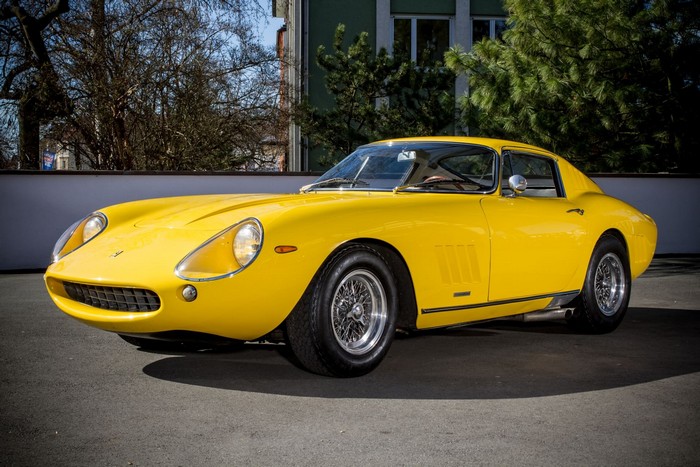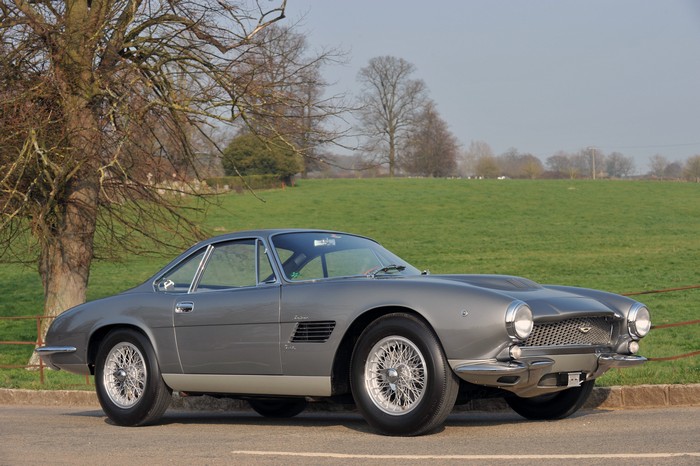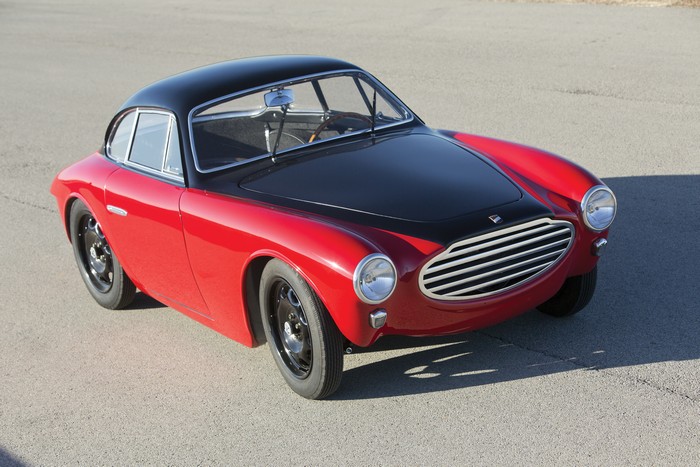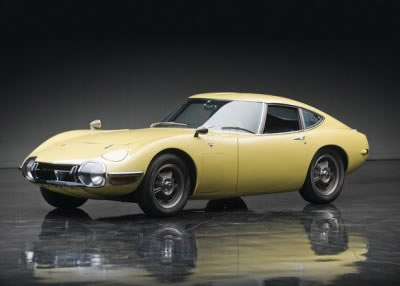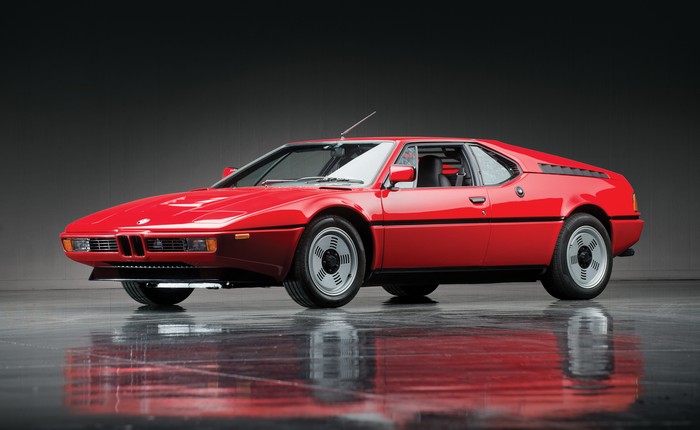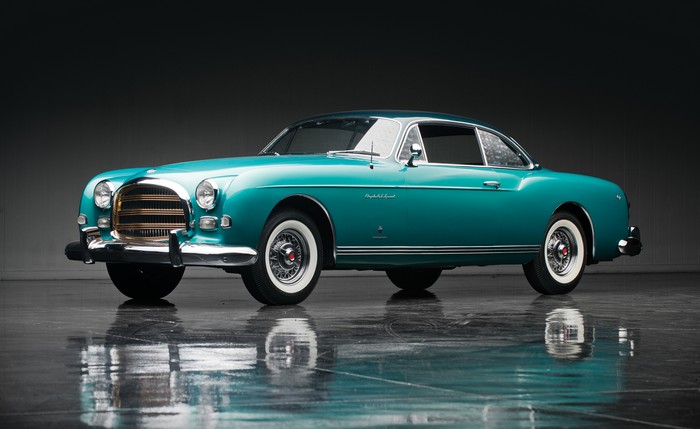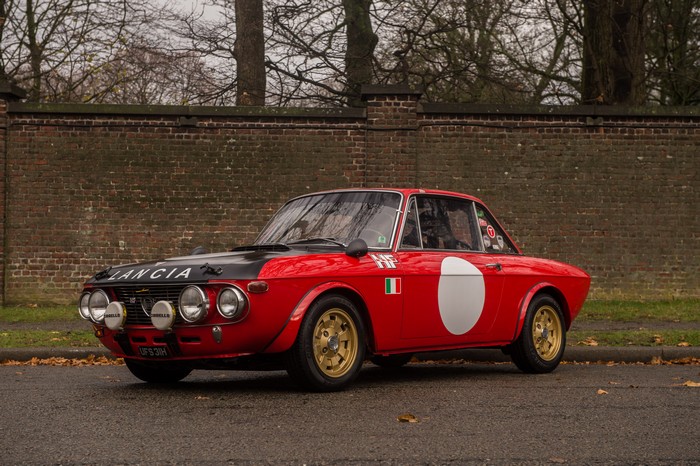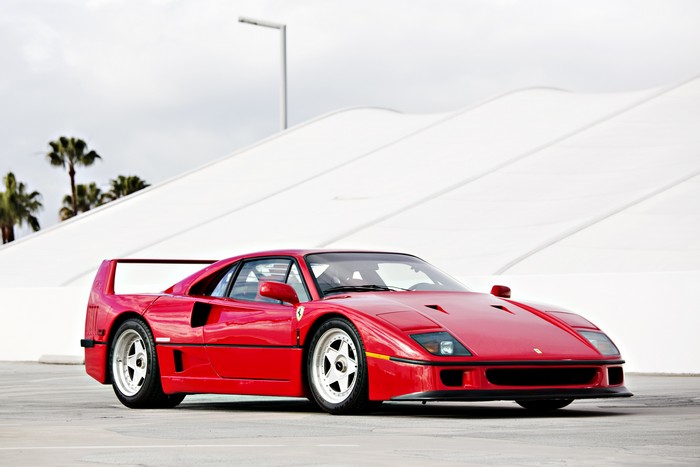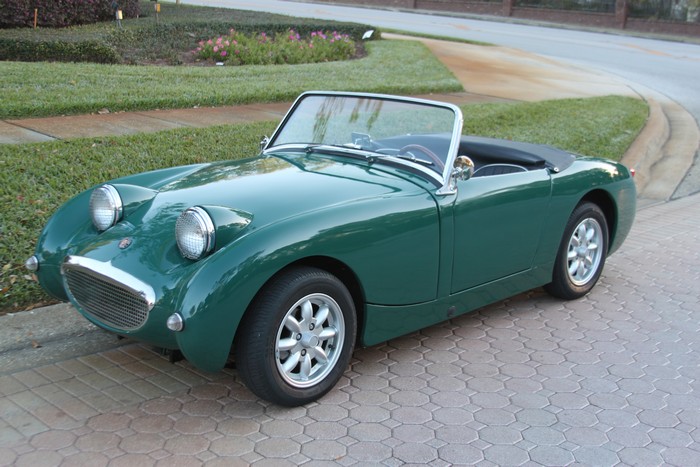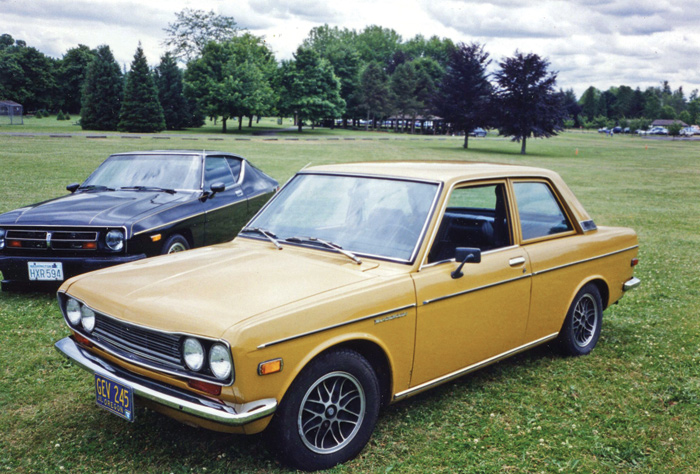1964 Ferrari 275 GTB Berlinetta Chassis number 06663 was originally built as a short-nose model with a steel body. Factory records show that the car was originally finished in Azzurro (blue) with Pelle Nera (black leather) interior. Less than two weeks after it was sold to its first owner, 06663 […]
Profiles
1960 Aston Martin DB4GT “Jet” coupe
Coachbuilt examples of the DB4/5/6 family of Aston Martins are extremely rare, making the unique Bertone-bodied car offered here all the more precious and desirable. Chassis 0201L is the last DB4GT chassis completed in period and was first displayed on Bertone’s stand at the 1961 Geneva Motor Show, followed by […]
1953 Moretti 750 Gran Sport Berlinetta
Giovanni Moretti made his name with racing engines for motorcycles. Following World War II, he began making small automobiles, the first powered by his own vertical twin-cylinder engine. In 1950, he developed a 4-cylinder overhead-cam engine, in both 600-cc and 750-cc sizes. Built on a backbone chassis, it was a […]
1967 Toyota 2000GT
The Toyota 2000GT is perhaps the best sports car you’ve never heard of. Developed in conjunction with Yamaha, this slinky 2-passenger coupe packed a 2-liter inline 6-cylinder engine with a cast-iron block and double overhead cams, good for 150 horsepower at 7,000 rpm and a top speed of over 135 […]
1980 BMW M1
In the late 1970s, BMW was still in its growing pains in the United States. The favored quirky rally car of the 1960s was becoming the favored fast luxury transport of young professionals. Between the two eras of Bayerische Motoren Werke, there was the M1, which remains the most exotic […]
1954 Chrysler GS-1 Special by Ghia
During the 1950s, Italian coachbuilder Ghia built numerous one-off “dream cars” for Chrysler Corporation. One, the slab-sided and extremely modern “Thomas Special,” named for Chrysler export executive C.B. Thomas, was so well received at European shows that a limited run of duplicates was produced for European customers. Others soon followed, […]
1969 Lancia Fulvia Coupe Rallye 1.6 HFS
In total, 1,258 1.6 HFs were built during 1969–70, of which approximately the first 600 were designated HFS and fitted with the Variante 1016 engine featuring modified cams similar to the Works rally cars. This car, 001578, which is a rare fanalone (big-headlight) version, is one of the last HFSs […]
F40 and F50 Showdown in Amelia
1990 Ferrari F40 • The last Enzo-era Ferrari • One of only 213 U.S.-specification F40s • Displayed at Concorso Italiano in 1991 and 1993 • Approximately 7,050 miles from new • Very original, unmodified example • Recently serviced at Norbert Hofer’s Grand Touring Classics • Offered with owner handbooks and […]
1960 Austin-Healey Bugeye Sprite
Restored Bugeye finished in British Racing Green with new black interior and new black top. Mechanical upgrades include a fresh rebuilt 1,275-cc motor, disc brakes, aluminum flywheel, aluminum radiator, dual SU carburetors, free-flow exhaust, alternator, high torque starter and spin-on oil filter.
A Pop Culture Icon on the Rise
When Datsun’s 510 came onto the scene late in 1968, it looked like Japan’s attempt at emulating the BMW 1600-2, which had debuted two years earlier.
Utilizing a 1600-cc SOHC engine and a drivetrain layout similar to the BMW, the Datsun offered technical sophistication and reliability that was nearly on par with its German competitor — but at a much lower cost. It was not as quick as the BMW in stock form — and it was not as good of a drive — but its price was roughly two-thirds that of the German, making it a compelling proposition.
In the United States, the 510 remained technically mostly the same during its five-year production run, with only minor model-year cosmetic differences. 510s were offered as 2- and 4-door sedans and as a station wagon. The sedans employed four-wheel independent suspension, while wagons had a live rear axle with leaf springs.
1968 model cars are the rarest, due to their introduction toward the end of the model year — and have trim differences, including different grilles and American-style instrument clusters with a sweep speedometer.
Cars from the 1969 model year retain many of the early design details. In 1970, Datsun introduced a round-gauge dashboard and headrests — not much else changed through 1972. In 1973 the 2-door was the only model offered, and 1973 cars sport rubber bumper overriders front and rear.
Some non-U.S. markets received performance-oriented twin-carbureted versions of the 510 (known worldwide as the Datsun 1600), and the home Japanese market was blessed with the sleek fastback Bluebird coupe. Unfortunately, these versions were never officially sold in the United States. However, in recent years, imports of Japanese vintage cars have been on the rise, and this means that a handful of Bluebird coupes have made their way to our shores.
